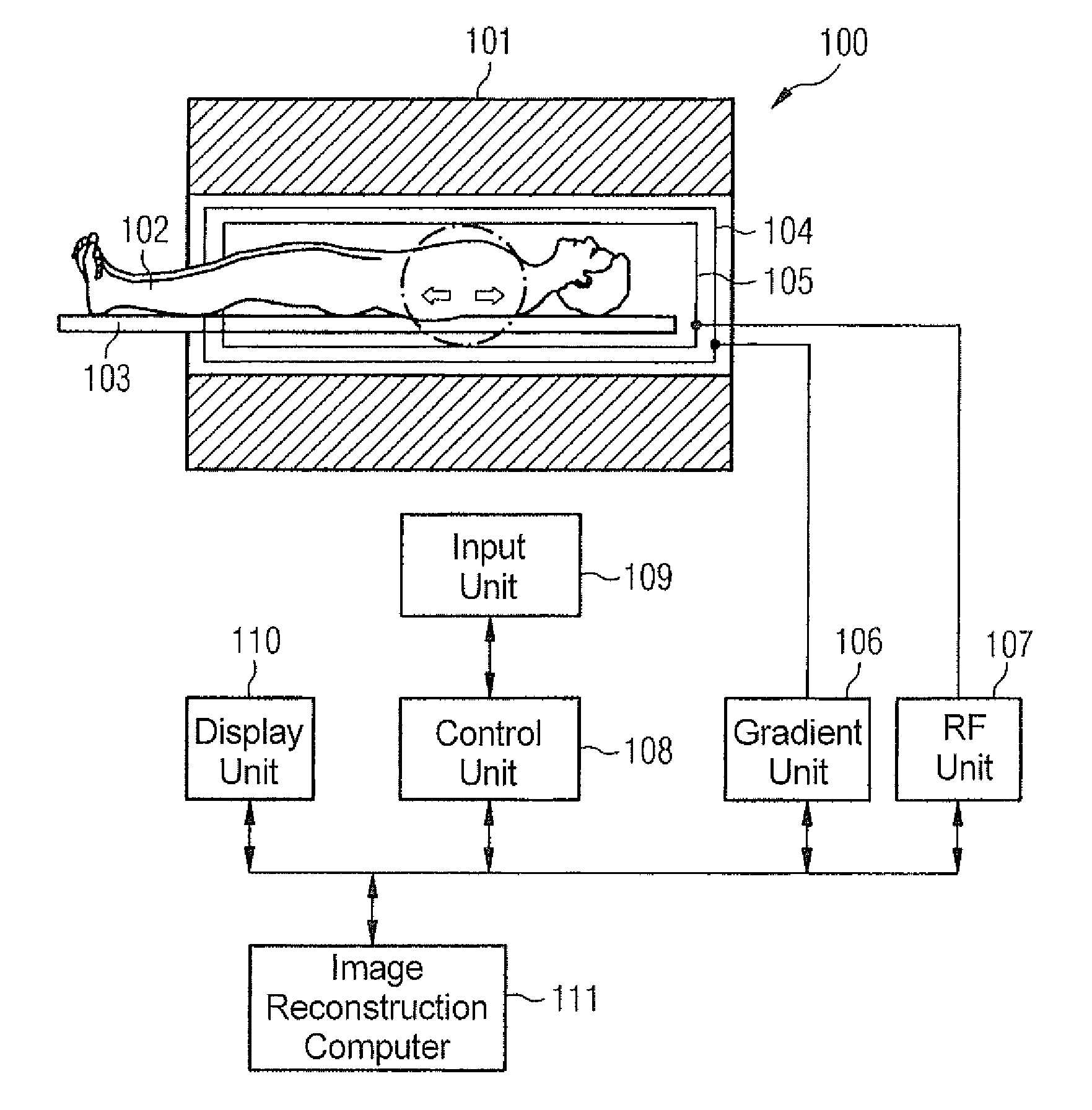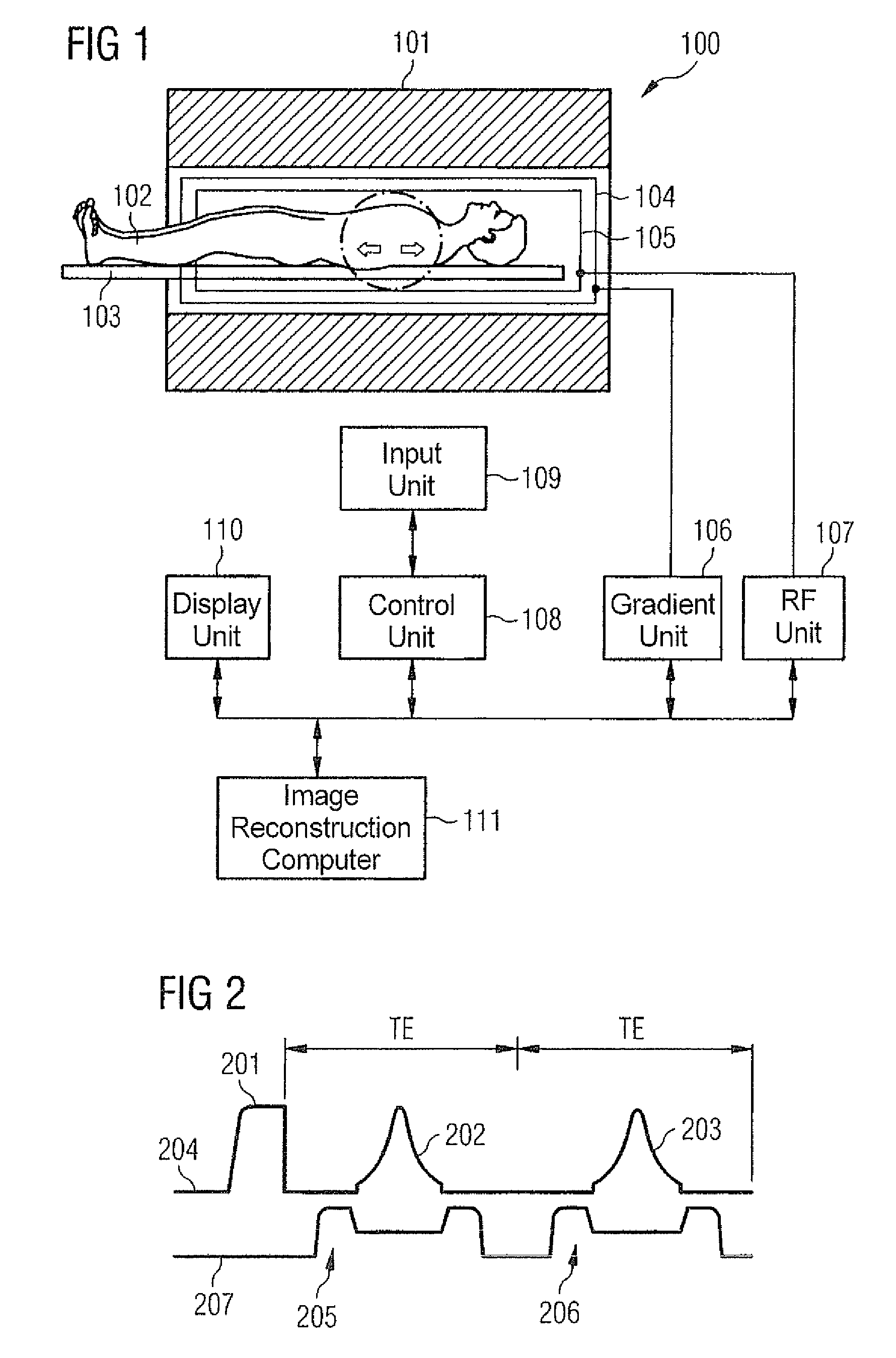Method and magnetic resonance system to excite nuclear spins in a subject
a magnetic resonance system and excitation method technology, applied in the field of methods to excite nuclear spins, can solve the problems of incomplete suppression of background signals, high energy injection into human tissue, incomplete suppression of signals of body fat, etc., and achieve the effects of low background signal, low energy injection, and reduced inhomogeneity of magnetic field
- Summary
- Abstract
- Description
- Claims
- Application Information
AI Technical Summary
Benefits of technology
Problems solved by technology
Method used
Image
Examples
Embodiment Construction
[0029]FIG. 1 schematically shows a magnetic resonance system 100 with which the phase position of a magnetization induced by an adiabatic radio-frequency pulse can be determined, for example for a subsequent acquisition of image data with a multi-echo magnetic resonance sequence. Such a magnetic resonance system has a magnet 101 for generation of a polarization field B0. In the example shown here, the examination subject is an examination person 102 who is arranged on a bed 103. As is schematically shown by arrows, the bed can be driven into the magnet 101 and moved in this. The magnetic resonance system furthermore possesses a gradient system 104 for generation of magnetic field gradients that are used for the imaging and spatial coding. A radio-frequency coil arrangement 105 that radiates a radio-frequency field into the examined person 102 in order to deflect the magnetization from the equilibrium state is provided to excite the polarization resulting in the basic magnetic field....
PUM
 Login to View More
Login to View More Abstract
Description
Claims
Application Information
 Login to View More
Login to View More - R&D
- Intellectual Property
- Life Sciences
- Materials
- Tech Scout
- Unparalleled Data Quality
- Higher Quality Content
- 60% Fewer Hallucinations
Browse by: Latest US Patents, China's latest patents, Technical Efficacy Thesaurus, Application Domain, Technology Topic, Popular Technical Reports.
© 2025 PatSnap. All rights reserved.Legal|Privacy policy|Modern Slavery Act Transparency Statement|Sitemap|About US| Contact US: help@patsnap.com



